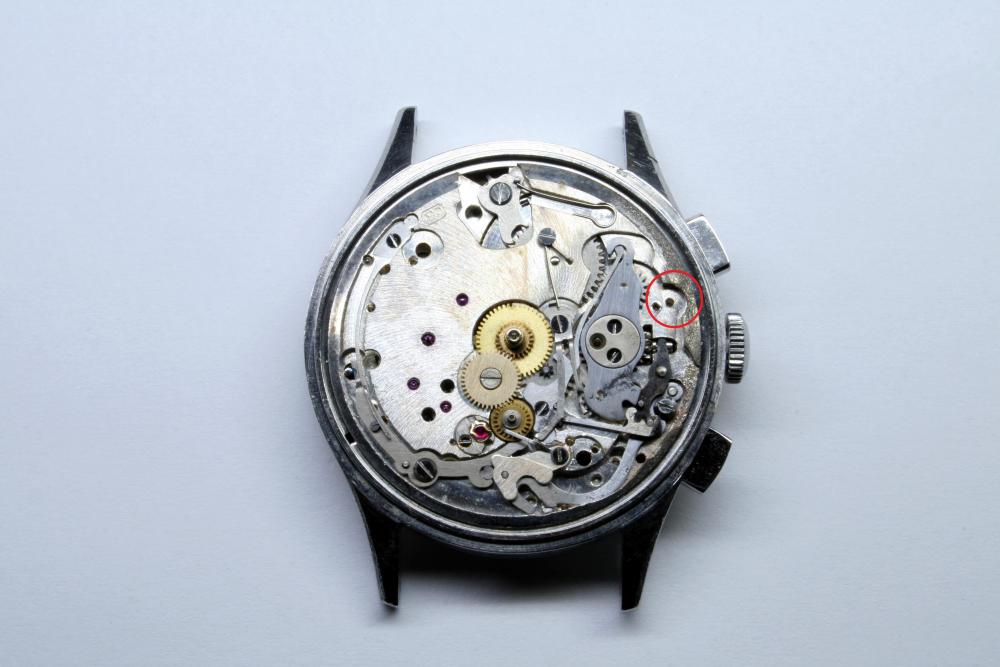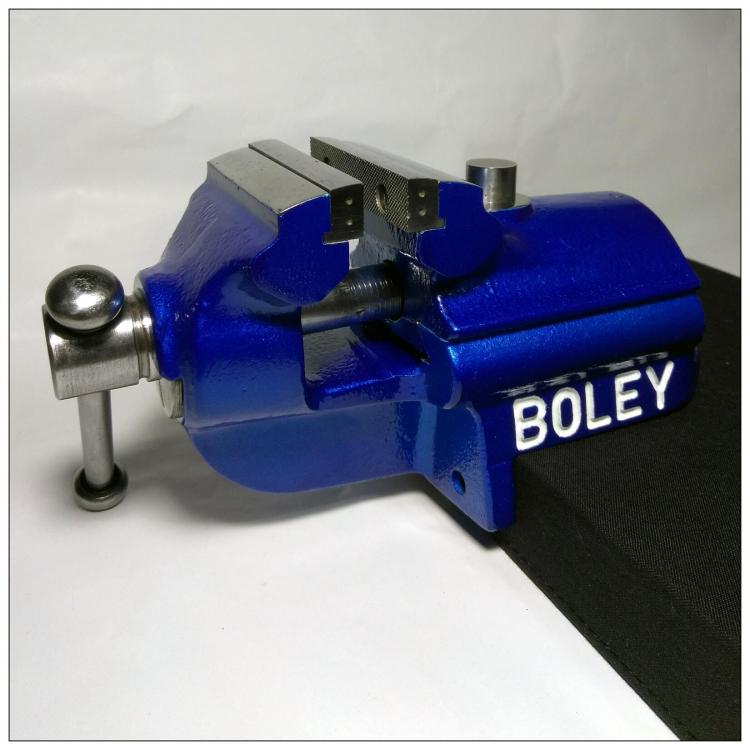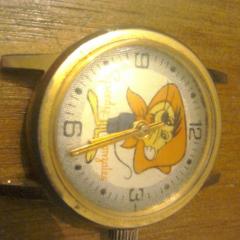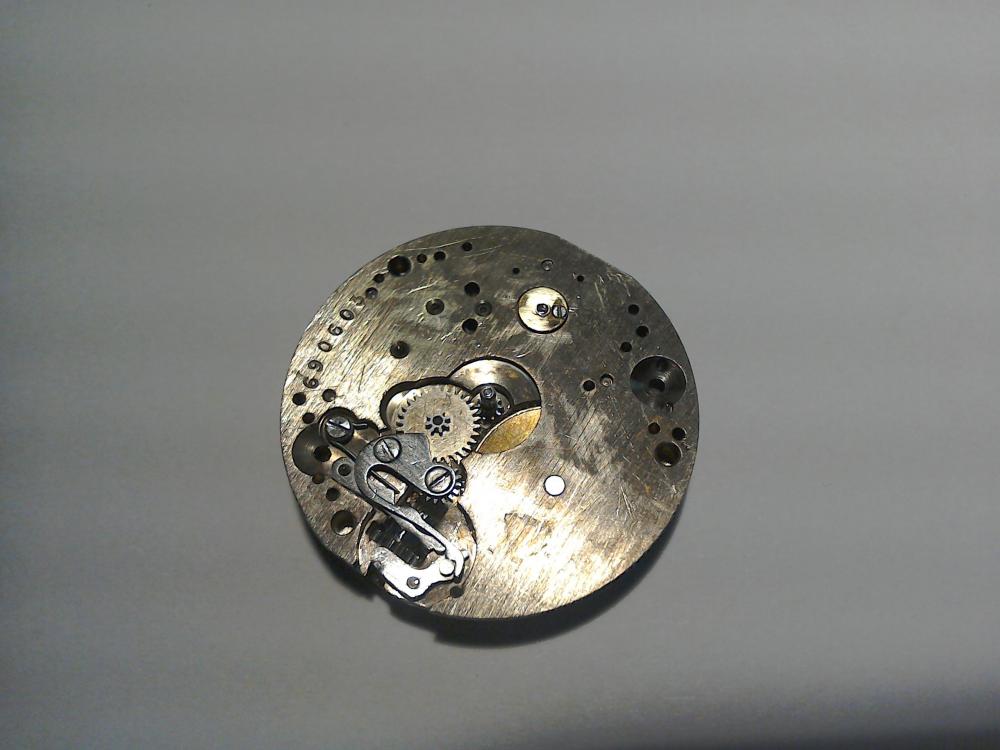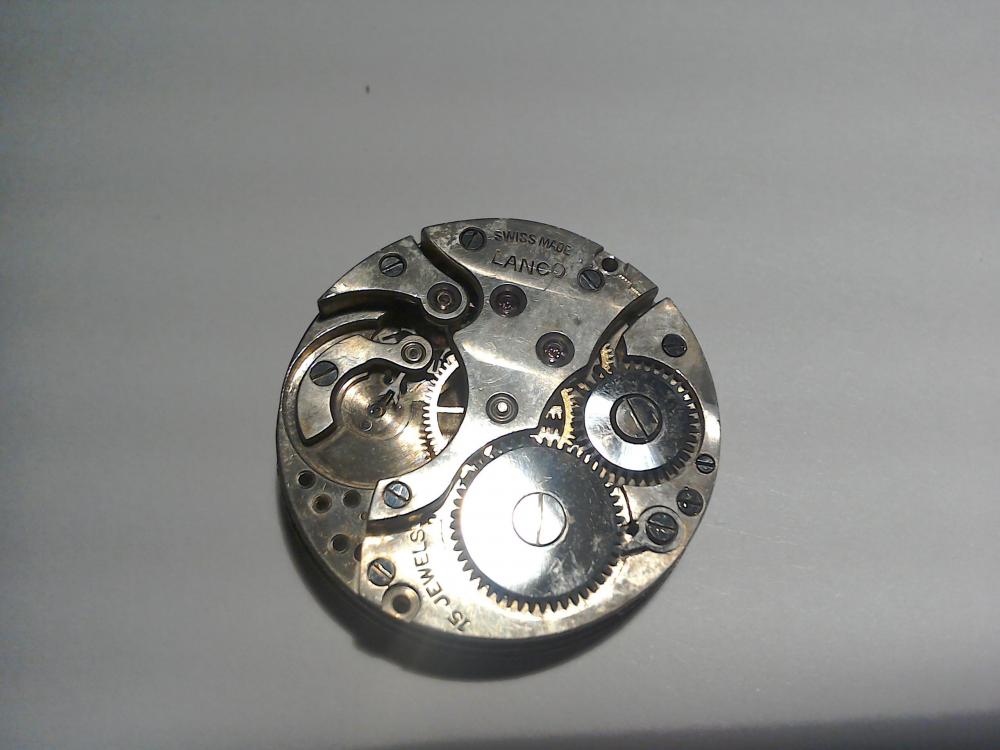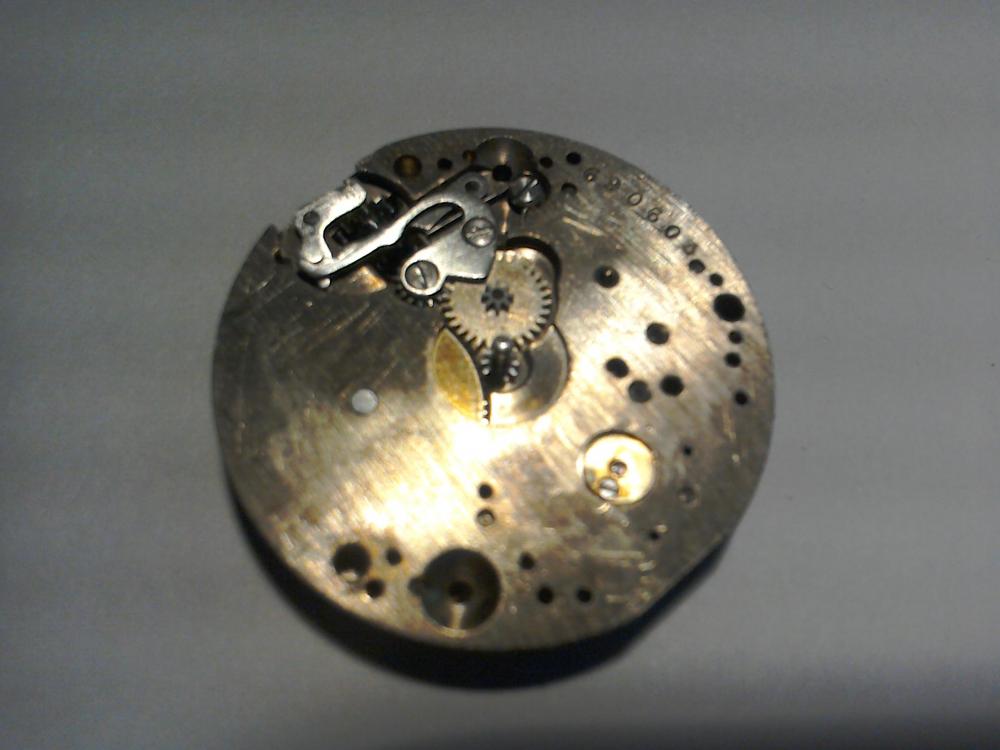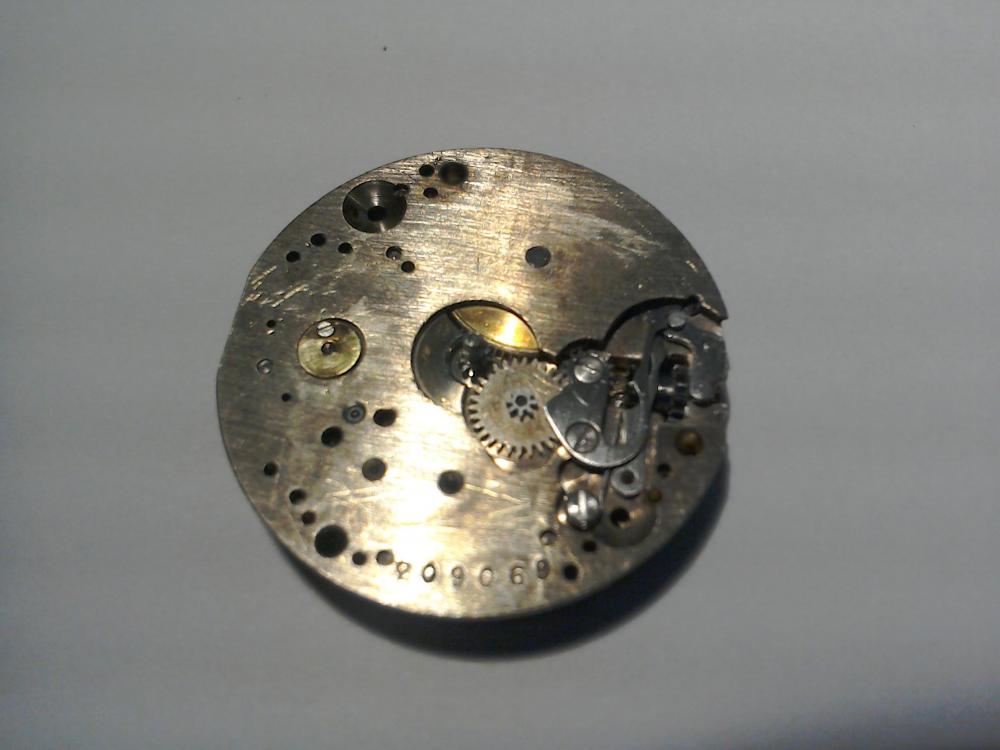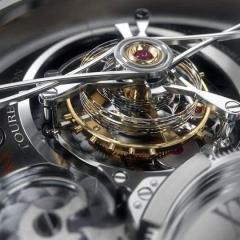Leaderboard
Popular Content
Showing content with the highest reputation on 07/02/19 in all areas
-
Well, I've pretty much wrapped up this project. The replacement chronograph pushers (buttons) arrived last week and needed a bit of adjustment before they could be installed. As you can see from the picture below, the shaft of the pusher which acts on the Flyback Lever was a bit long and needed to be turned down on the lathe then re-threaded. The lot of Excelsior Park parts which I purchased earlier included replacement coil springs for the pushers which was just perfect as the spring for the Flyback Lever was quite rusty. The replacement is pictured below. I found it was easiest to case the movement first, then install the pushers. While doing this I noticed there was a part missing from the keyless works. Worried that I had lost something irreplaceable, I went back over my images taken during disassembly and discovered the missing bit wasn't there when I started. The missing piece belongs to the setting lever assembly- although what exactly it's purpose is I'm not sure. Perhaps it provides stability when applying the clutch. I noted the keyless works seems to function properly without the part so maybe it's just the appendix of an EP40 movement. I've circled the area with the missing bit below and added a linked image from the Watchguy's image archive which shows exactly what is missing. If I ever do find the missing part, I'll probably have to give my right arm to purchase it. I replaced the Flyback Lever and Operating Lever, both of which secured the pushers to the movement. The Flyback Lever is secured with a left-hand thread shouldered screw. The original screw was destroyed by rust but I found a suitable replacement; it doesn't have the three slots cut into the head so I added a dab of blue paint to distinguish the screw. I still need to find a large case screw to replace the original which was also destroyed. I needed to adjust some of the eccentrics in order to get the chronograph working just right. It's a pity too because those eccentrics had perfect heads on them until they were galled by my screwdriver. That will serve as a reminder to review the section in George Daniel's book on screwdriver sharpening. I cleaned up the dial with a bit of water and a Q-Tip but as you can see I lost some of the tachymetre around 3 o'clock from my efforts. The text came away without effort so I stopped any further efforts to improve the dial. The Hour, Minute, and Minute Recording hands all had oxidation damage. I scrapped the rust away with an oiler and Rodico and applied a coat of varnish to the luminous paint to keep it from crumbling. I think I could have polished and re-blued the hands (which would have been the "correct" solution) but opted to keep the scarred look; it's a reminder of what this watch has been through. By the way- blued steel hands on a white dial is just a fantastic look. They look black against the dial when viewed straight on, but when the light hits them just right they shimmer with the deepest blue. I tried to catch an image of the effect with my camera but just couldn't do it justice. A high dome acrylic crystal completed the job. So far, so good. The movement has kept time for the past twenty-four hours without issue. Once I've found a strap for it, I'll take it out on the town and then make final adjustments if need be. I think I got lucky on this one as the water damage wasn't as great as it could have been and I was able to find all of the replacement parts at a reasonable cost. Only the pushers broke my budget but I'm happy with the new buttons. I still have some NOS parts left over which I can hold onto or flip later to offset the cost of repair.4 points
-
3 points
-
Hi, The movement appears to be the savonette version of the 11''' Langerdorf/Lanco 1 which probably goes back to the 1920s. As others have stated, it is clearly not original to your watch as Fero used pin-lever movements from Baumgartner, Brac, EB and possibly others. Regards.2 points
-
1 point
-
Hello, my name is Mark Franken. I collect watches and maintain them myself. I love working on watches and doing minor repairs for friends and family. I want to aquire better skills to take on more challenging projects. Thanks for having me!1 point
-
Made from parts of varied and indeterminate parentage. Usually, but not always, applied to dogs. Regards.1 point
-
have some EB1197 parts here to if you need . I am over the sea but should take a week. Let me know and i have a look. BTW what is a Mongrel? have heard the word but what does it mean?1 point
-
Back when watches weren,t looked upon as collectible, Some watch destroyer broke dial feet to glue this movement to.1 point
-
There's a relative of Audemars (Posts under that name.) who contributes regularly on the NAWCC message board. He seems like a nice guy. He might be able to help. Good luck.,1 point
-
Thanks MrRoundel. It's a candy blue over silver metallic base, clear coat overall. It's a high temp, oil, gas resistant finish. According to a German Watch historical museum the G. Boley vises are suppose to be a very precise parallel vise. They made a rotating base for the C60 and I've only seen one with it, which was on eBay. I didn't know if the Google translation of the German site is correct, if so then what I was referring to as a removable anvil is called a "saddle". Now restored I can tell you it's as smooth as silk. Just a beautifully made vise. I hope to make a couple add on jaws for it such as a felt set and a poly set that clip on using the detents on the side of the existing jaws. If not magnets.. lol I'm not into restoring vises per say, I have a few that were discarded, or left heading to the landfill such as this Boley C60 was. To me it's just a waste to throw them away when a little effort can bring something back and in some cases I can improve it and put it back in service. Saving the planet one project at a time. You guys here would have salivated over all the watch and clock repair tools and stuff that got tossed out of this unit where this vise came from. Very sad... I was there last person in asked to clean it up some. This and a couple other small items were all I could salvage. They destroyed most of the rest. A clock/watch repair man's entire life discarded after his passing. At least this vise is still around. And I left some of the marks he made in it just because. Restored it should last another 100 or so years if cared for properly. Still hoping to date it. Going to write the German museum to see if they can help in that regard. Cheers..1 point
-
1 point
-
Is there anyone close to where you live that undertakes watch repairs?1 point
-
Let see if we can get Mark lovic to service them, wouldn,t hurt to ask. I think he just may want to make a video( lesson) out of it. Just a thought.1 point
-
Thank you Rogart, just looked at your link, the same watch! You have made up my mind for me, I am going to find an EB1197 movement and replace the Lanco. Many thanks again1 point
-
You might be able to do the job yourself, depending on your level of skill with a few simple tools, and a can of lighter fluid. Timex watches are generally quite easily serviced. If it needs a repair however, then things might get a little more involved. Perhaps take a look at this thread first. Look also at the "Similar Content" related threads, and if you feel like giving it a go yourself, I'm sure there will be plenty of useful advice if you ask here.1 point
-
Don't think it's the original movement. Says 17 jewels on the dial and 15 on the Lanco movement. I looked at Fero and found this. https://www.etsy.com/nl/listing/268861639/fero-17-jewels-196070s-gents-watch-with?utm_source=Pinterest&utm_medium=PageTools&utm_campaign=Share Should think it could have had a EB 1197?1 point
-
I don't think grease will help, pay attention to what Ancyclient wrote above, the die must press on the perimeter only. You have a lathe so no problem for you to make a better die if needed.1 point
-
Another little thing as well as the above mentioned is make sure the caseback die is big enough , a to small a die tends to just exert pressure on the middle of the caseback therefore flexing the caseback edges out a little thus making the back bigger and harder to get on . You want the die to be as big as the caseback really and as also mentioned , some can put up a good fight1 point
-
Hi Andy is spot on there I had similar problems with a Zenith case back, It all has to be flat.1 point


